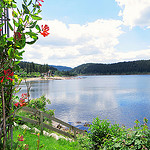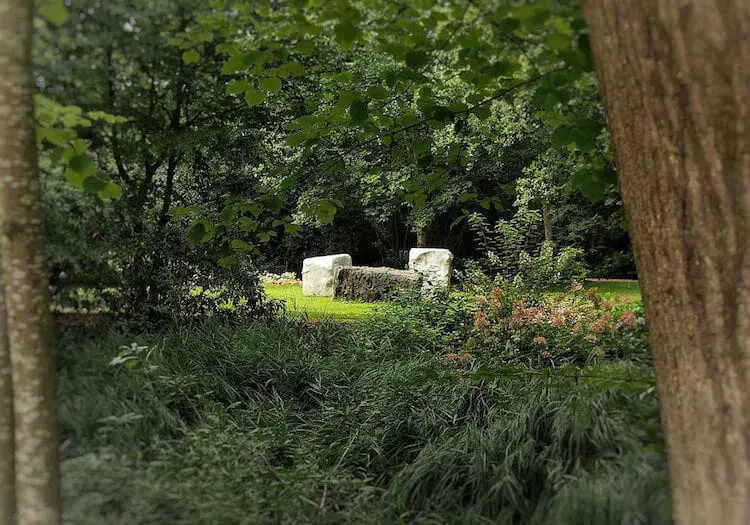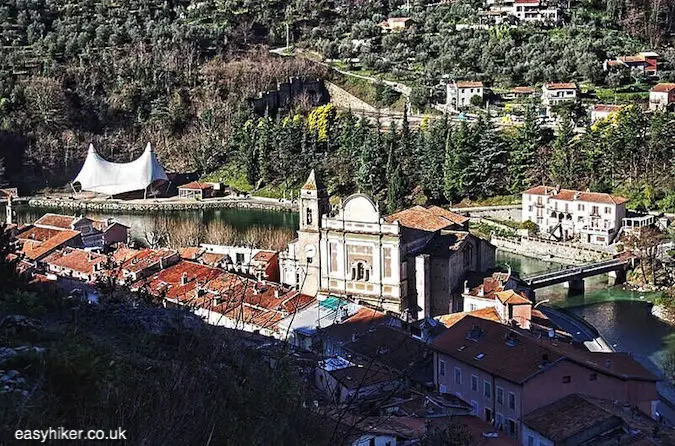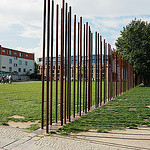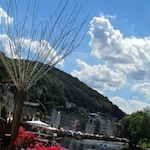Himmler’s Last Crusade
Whether you decide to take a half-day hike on the Jesuitenpfad or, like us, go for the “lazy” option of a short walk along the river Alme, Wewelsburg Castle will be the highlight of your trip to this part of the Paderborner Land.
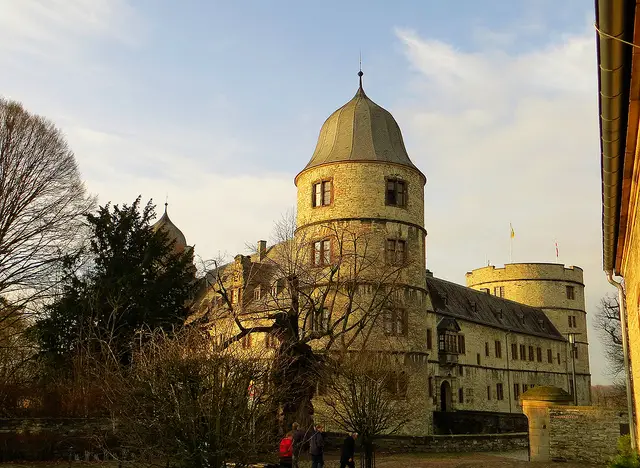
The original Wewelsburg castle was built in the early Middle Ages, but the exteriors you see today largely come from the 16th century when this type of strongly fortified, moated castle was quickly becoming a thing of the past.
The municipal government who owns the place is running two parallel exhibitions in connection with the building: for the first of these, enter the castle through the main gate and turn left for the box office to visit the southern wing (the only one that is not in use as a Youth Hostel).
The exhibition covers the history of the castle from its beginnings until 1935, is lovingly done, and the basement room where witches were interrogated and tortured in the late Middle Ages is genuinely eerie.
On the other floors, there are exhibits that explain to you in minute detail how a 16th century oven operated and how medieval agriculture worked.
No collection of period artefacts, however, no matter how “lovingly done” and carefully arranged, can make up for the castle’s near total lack of original features – which is a direct consequence of its more recent history: the events past 1935 when Wewelsburg Castle was commandeered by the SS, Nazi Germany’s elite unit of “Aryan warriors”, and its High Command, retreating from the Allied Forces in the spring of 1945, ordered the building to be set on fire.
You can learn much of this period in the castle’s history in the other exhibit (“Ideology and Terror of the SS”) which is accessible through the modern guardhouse a few meters outside the castle walls.
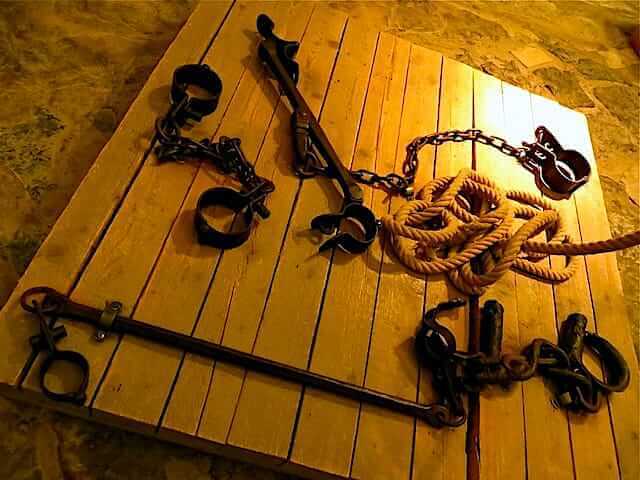
At the very end of this exhibition, the route leads you through a rear exit of the guardhouse back to the castle. You will walk through the moat and underneath the bridge that was constructed by the SS in the 1930s, the most prominent new feature of the castle’s exterior, into the North Tower where two important SS rooms have been preserved.
Walk up the staircase to the officers’ meeting room from where you get stunning views over the surrounding landscape. What Heinrich Himmler and the other SS leaders would have seen at the time was not dramatically different from what you see today, but their plans for the future were far more ambitious.
In the landscape outside the castle, they wanted to build a large gated settlement for SS officers (complete with lodgings for the people to serve them) and a radiating network of roads, featuring a 2 km long, arrow-shaped highway called “The Spear of the North”.
The most prominent decorative feature of the room itself is the sun wheel in the centre of the floor whose twelve spokes are shaped like the Germanic runes in the logo of the SS.
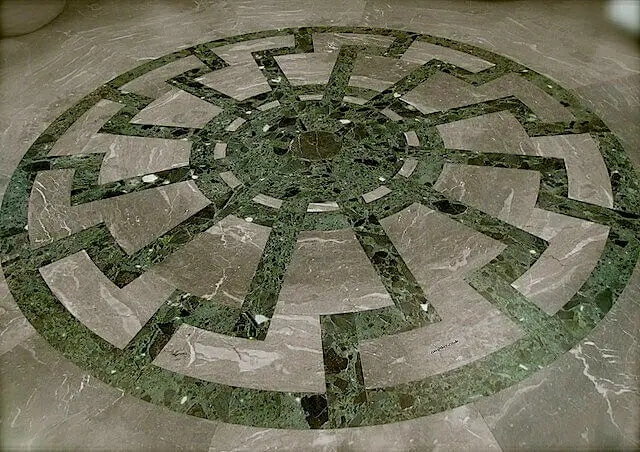
If you think that this is creepy, you ain’t seen nothing yet. Walk down the staircase into the vault underneath the ground floor. Nobody knows exactly what this room was originally intended for, but the open fireplace in the middle, borrowing from the rituals of ancient Greece, appears to indicate that it was meant to serve as some place of worship for the dead.
Perhaps they planned to place urns with the ashes of high-ranking SS officers on the pedestals in the walls. Perhaps this was intended as the burial site for Himmler himself. Perhaps this is where the SS expected the Knights of the Round Table to re-emerge from the mists of time, King Arthur and Sir Galahad continuing their quest for the Holy Grail and helping the SS on their path to world domination.
This is not a joke. There are indications that Himmler and at least some of his leading officers seriously believed in some sort of future cooperation between their own organization and the knights of Camelot.
Wewelsburg Castle may have been originally planned to become a mere SS academy, but it soon took on a far more sinister significance. Much of this is based on speculation, not least because the core beliefs of the “SS religion” were not disseminated widely beyond the circle of the initiated, but it appears that Wewelsburg Castle was meant to serve as the central shrine of a cult that mixed ancient prophesies, Nordic mythology, pagan rituals and the saga of the Holy Grail.
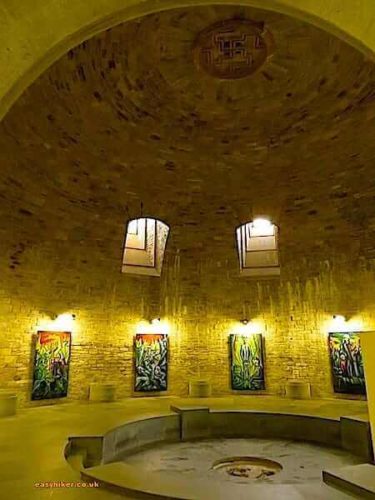
The SS, to give you a flavour of this, was very keen on solstice ceremonies to celebrate the birth of the “Sun Child”, a mythical leader born from the ashes of Jesus Christ. The English journalist and broadcaster Jonathan Meades has it spot on when he says that the Nazi party was more an “occult sect” than a conventional political organization: “Imagine a whole nation taken over by David Koresh or Jim Jones. Imagine the USA where everybody is a member of the Ku-Klux-Clan.”
I bet you have always thought that the plot of Indiana Jones and The Last Crusade was some sort of bold invention? Well, think again. Truth in this case is stranger than even the most tongue-in-cheek piece of Hollywood fiction.
Read more about our hike around this Nazi monument in the centre of the world HERE

